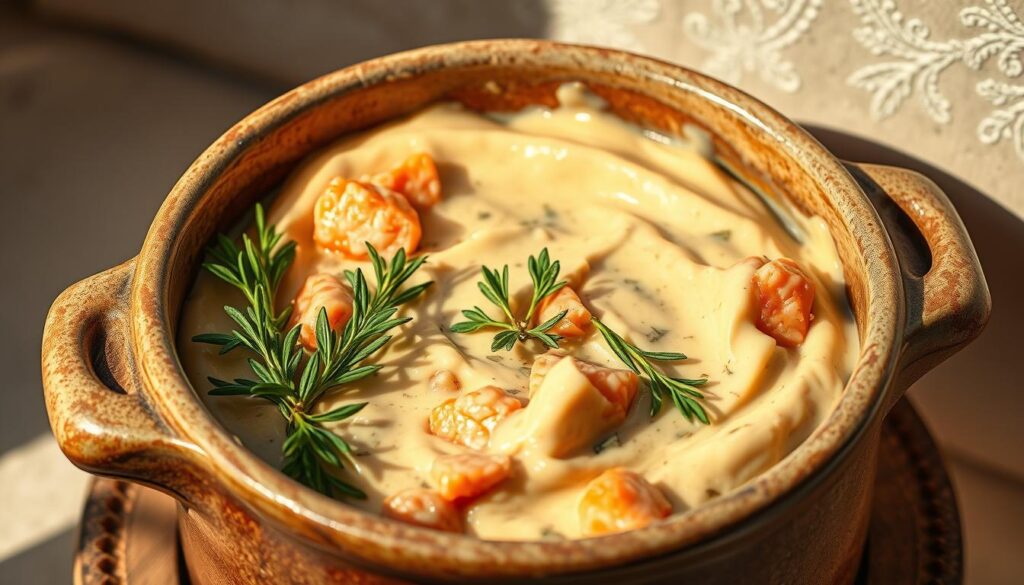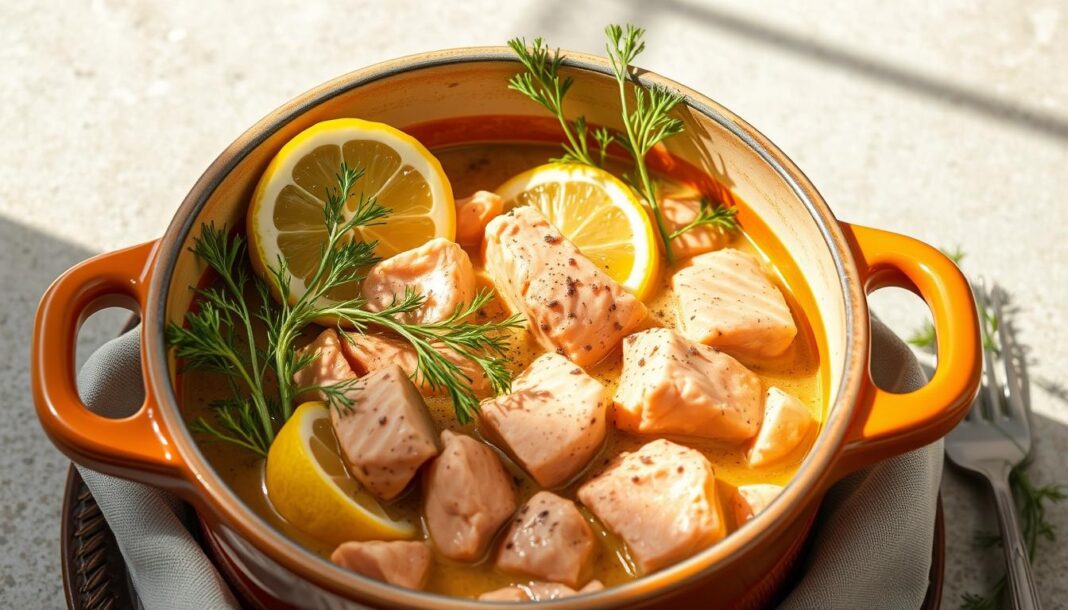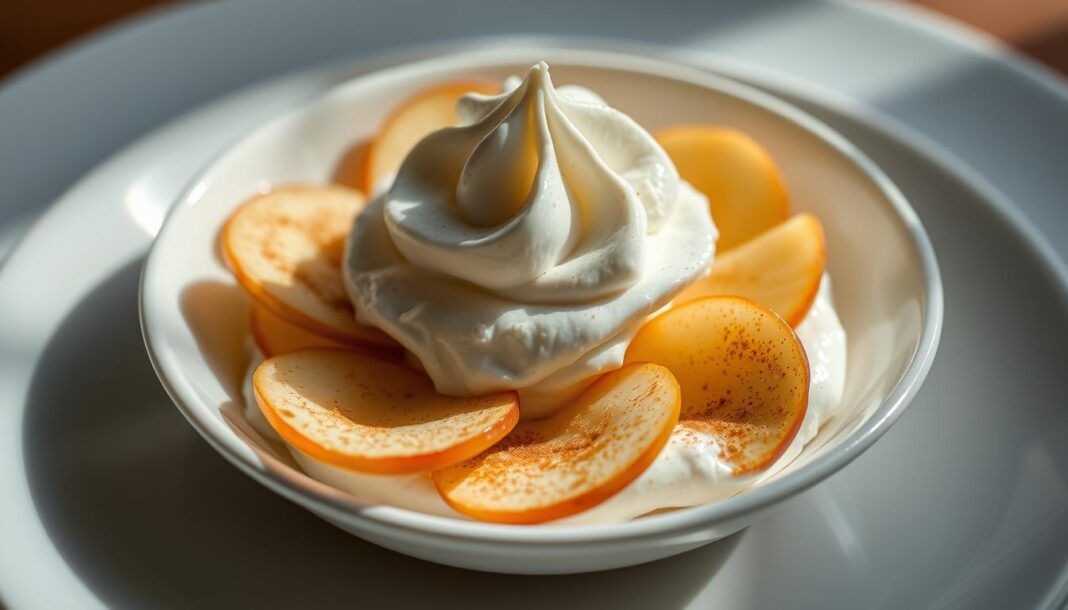We explore the rich history and culinary significance of potted salmon, a traditional preservation method that has evolved into a beloved delicacy. This dish, showcasing the natural flavors of salmon, has been a staple in British food culture for centuries.
By delving into the science behind preservation techniques and the balance of flavors and textures, we empower home cooks to master this timeless fish recipe. Potted salmon remains relevant in modern cuisine, offering a delicious and practical solution for extending the shelf life of salmon.
Our comprehensive guide provides the knowledge needed to create this classic dish with confidence in your own kitchen, exploring its historical significance and adaptation over time.
Key Takeaways
- Understanding the historical context of potted salmon and its significance in British cuisine.
- Learning the science behind preservation techniques used in potted salmon recipes.
- Mastering the balance of flavors and textures in this traditional dish.
- Gaining confidence in preparing potted salmon in your own kitchen.
- Appreciating the relevance of potted salmon in modern food culture.
The Rich History of Potted Salmon
For centuries, potted salmon has been a beloved dish, cherished for its rich flavor and historical significance. Potting was a traditional preservation method used before refrigeration became common. This technique allowed for the long-term storage of fish, making it a staple in many cuisines.
Origins and Traditional Preparation
Potted salmon originated as a practical solution for preserving salmon, a highly perishable fish. The traditional preparation involved layering cooked salmon with herbs and spices in a pot, then sealing it with clarified butter to prevent air from reaching the food. This method not only preserved the salmon but also enhanced its flavor.
Why Potted Salmon Remains Popular Today
Despite modern refrigeration, potted salmon has endured as a beloved dish due to its distinctive flavor profile and elegant presentation. We appreciate potted salmon not just for its practicality but for its rich, concentrated salmon flavor that develops during the preparation process. The dish has evolved from a necessity to a gourmet appetizer featured in upscale restaurants and special occasions.
| Aspect | Traditional Significance | Modern Appeal |
|---|---|---|
| Preservation Method | Potting was crucial before refrigeration | Now appreciated for its historical value |
| Flavor Profile | Rich, concentrated flavor developed over time | Continues to be a highlight of the dish |
| Culinary Use | Originally a necessity for long-term storage | Now featured in gourmet recipes and upscale dining |

Essential Ingredients for Perfect Potted Salmon
The key to an exceptional potted salmon lies in its ingredients, where the quality of the salmon, the blend of herbs, and the use of clarified butter play crucial roles. We find that the harmony among these components is what elevates this dish from a simple recipe to a culinary experience.
Selecting the Right Salmon
We recommend using fresh, high-quality salmon for the best flavor and texture. The type of salmon can vary, but Atlantic or Sockeye salmon are popular choices due to their rich flavor profiles.
Herbs and Seasonings
The blend of herbs and seasonings adds depth to the potted salmon. Traditional combinations include salt, pepper, and a hint of nutmeg or mace, which complement the salmon without overpowering it.
The Importance of Clarified Butter
Clarified butter is crucial for both its flavor and its preservative qualities. By melting unsalted butter and straining off the milk solids, we are left with pure butterfat that not only cooks the salmon gently but also creates an airtight seal when cooled, thus preserving the dish.
- The process of clarifying butter removes water and milk solids, resulting in a higher smoke point and a richer flavor.
- This clarified butter serves as both a cooking medium and a method of preservation, preventing air from reaching the salmon and causing spoilage.
- The golden color and semi-solid texture of chilled clarified butter add to the dish’s visual appeal and ease of use.
| Characteristics | Regular Butter | Clarified Butter |
|---|---|---|
| Composition | Butterfat, milk solids, water | Pure butterfat |
| Smoke Point | Lower | Higher |
| Preservative Qualities | Limited | Effective airtight seal |
| Flavor | Rich, but can burn easily | Rich, nutty flavor |

Step-by-Step Potted Salmon Recipe
Now that we have explored the history and ingredients of potted salmon, let’s dive into the preparation process. Making potted salmon involves several straightforward steps that require some patience but yield a richly rewarding result.
Preparing the Salmon
Begin by selecting fresh salmon fillets. We recommend using high-quality salmon for the best flavor. Place the salmon in a pan and gently cook it until it’s just done. Be careful not to overcook, as this can make the salmon dry.
Creating the Flavorful Mixture
In a bowl, mix the cooked salmon with cream and a selection of herbs and peppercorns. The cream adds a richness to the dish, while the peppercorns provide a subtle spice. Ensure the mixture is well combined but still retains some texture.

Sealing with Clarified Butter
Transfer the salmon mixture to a serving dish and cover it with a layer of clarified butter. This step is crucial as the butter acts as a seal, preserving the salmon and enhancing its flavor. Make sure the butter covers the surface entirely.
Chilling and Setting Time
Set the dish aside in the refrigerator until ready to serve. We recommend chilling it for at least 4 hours, or overnight for superior results. The chilling process allows the flavors to meld together and the cream to firm up, making it spreadable on slices of toast or crackers. After about 20 minutes of being at room temperature, the potted salmon should be ready to serve, with the butter layer having solidified to protect the delicate salmon mixture.
For more detailed recipes and variations, you can visit Chef John’s Potted Salmon Recipe.
Serving Suggestions and Pairings
Potted salmon shines when presented thoughtfully, complementing its complex flavor. Traditionally, it’s served with thinly sliced toast points or crusty bread, providing a neutral base that contrasts with the creamy salmon mixture.
For a contemporary twist, serve it alongside cucumber slices or as part of a seafood board with smoked salmon and various cheeses. A garnish of fresh dill and a wedge of lemon adds visual appeal and flavor. Potted salmon pairs well with dry sparkling wines and can precede a main course of roasted lamb, creating a balanced progression of flavors.


